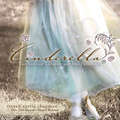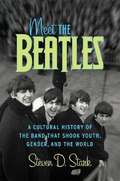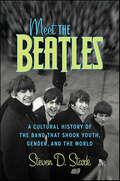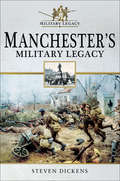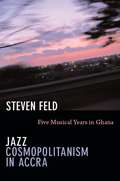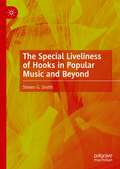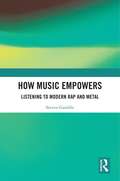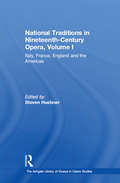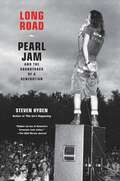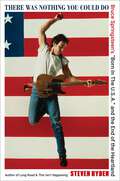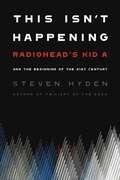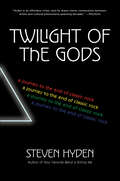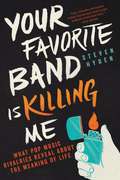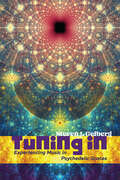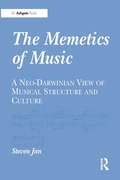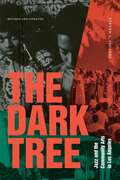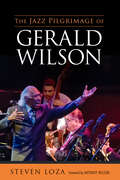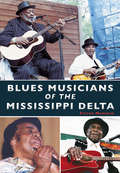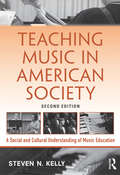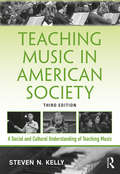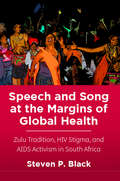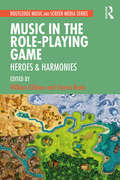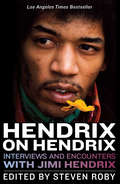- Table View
- List View
Cinderella: The Love of a Daddy and His Princess
by Steven Curtis ChapmanAs the clock strikes midnight, remember . . . Each moment we have to spend with our children is a blessing from above. But as we cherish this chapter of life, we realize the pages of time will keep turning. Alternating between the voices of a father and his daughter, Cinderella celebrates the blessings of childhood, family, love and life. You will be enchanted by this modern fairytale that teaches us how to hand our own Cinderella her glass slippers and let her go.
Meet the Beatles: A Cultural History of the Band That Shook Youth, Gender, and the World
by Steven D. StarkA discussion of the trends that created and followed the Beatles, tales of each members childhood,how their style represents mild gender bending, and attempts to describe their many long term impacts.
Meet the Beatles: A Cultural History of the Band that Shook Youth, Gender, and the World
by Steven D. StarkRob Sheffield, the Rolling Stone columnist and bestselling author of Love Is a Mix Tape, offers an entertaining, unconventional look at the most popular band in history, the Beatles, exploring what they mean today and why they still matter so intensely to a generation that has never known a world without them.Meet the Beatles is not another biography of the Beatles, or a song-by-song analysis of the best of John and Paul. It isn’t another exposé about how they broke up. It isn’t a history of their gigs or their gear. It is a collection of essays telling the story of what this ubiquitous band means to a generation who grew up with the Beatles music on their parents’ stereos and their faces on T-shirts. What do the Beatles mean today? Why are they more famous and beloved now than ever? And why do they still matter so much to us, nearly fifty years after they broke up?As he did in his previous books, Love is a Mix Tape, Talking to Girls About Duran Duran, and Turn Around Bright Eyes, Sheffield focuses on the emotional connections we make to music. This time, he focuses on the biggest pop culture phenomenon of all time—The Beatles. In his singular voice, he explores what the Beatles mean today, to fans who have learned to love them on their own terms and not just for the sake of nostalgia. Meet the Beatles tells the story of how four lads from Liverpool became the world’s biggest pop group, then broke up—but then somehow just kept getting bigger. At this point, their music doesn’t belong to the past—it belongs to right now. This book is a celebration of that music, showing why the Beatles remain the world’s favorite thing—and how they invented the future we’re all living in today.
Manchester's Military Legacy (Military Legacy)
by Steven DickensThe establishment of the Roman fort of Mamucium in AD79 is the first known record of any military construction, or presence, in the area that is now the Castlefield district of the city. The Roman auxiliary units posted here used the fort as a garrison, located at Mamucium for the purpose of protecting the Roman road from Chester (Deva Victrix) to York (Eboracum). The site was previously occupied, as a defensive hill fort, by the ancient Britons, or Brigantes, who were native to the area.The next epoch of military activity at Manchester occurred in the Civil War and the Siege of Manchester in 1642. Manchesters declaration as a Parliamentarian town had far-reaching consequences, in terms of its military legacy, on the voting rights of Mancunians. Upon his restoration Charles II removed Manchesters two MPs from Parliament and Manchester was not to receive any political representation until the Reform Act of 1832.The Peterloo Massacre, of August 1819, was the scene of a mass rally brought about by a desire to repeal the Corn Laws, introduce universal suffrage and reform other repressive legislation. The cavalry charge which resulted in the deaths of an estimated eighteen innocent protesters and the wounding of over 500, took place at St. Peters Field (now Square) in the heart of the city. Its legacy resulted in the establishment of the Manchester Guardian and the rise of radical freethinking in the city, not always welcomed by those in authority.Both World Wars have had a profound influence on the city. The establishment of the Manchester Regiment is detailed and later the Manchester Pals are recalled through the pages of the local press. Heaton Park became their base, whilst General Kitchener visited the city, in order to boost recruitment. Later the Luftwaffes bombing campaign of December 1940, the Manchester Blitz, left the city with a legacy that has changed it beyond all recognition into the twenty-first century.
Jazz Cosmopolitanism in Accra: Five Musical Years in Ghana
by Steven FeldIn this remarkable book, Steven Feld, pioneer of the anthropology of sound, listens to the vernacular cosmopolitanism of jazz players in Ghana. Some have traveled widely, played with American jazz greats, and blended the innovations of John Coltrane with local instruments and worldviews. Combining memoir, biography, ethnography, and history, Feld conveys a diasporic intimacy and dialogue that contests American nationalist and Afrocentric narratives of jazz history. His stories of Accra's jazz cosmopolitanism feature Ghanaba/Guy Warren (1923-2008), the eccentric drummer who befriended the likes of Charlie Parker, Max Roach, and Thelonious Monk in the United States in the 1950s, only to return, embittered, to Ghana, where he became the country's leading experimentalist. Others whose stories figure prominently are Nii Noi Nortey, who fuses the legacies of the black avant-gardes of the 1960s and 1970s with pan-African philosophy in sculptural shrines to Coltrane and musical improvisations inspired by his work; the percussionist Nii Otoo Annan, a traditional master inspired by Coltrane's drummers Elvin Jones and Rashied Ali; and a union of Accra truck and minibus drivers whose squeeze-bulb honk-horn music for drivers' funerals recalls the jazz funerals of New Orleans. Feld describes these artists' cosmopolitan outlook as an "acoustemology," a way of knowing the world through sound.
The Special Liveliness of Hooks in Popular Music and Beyond
by Steven G. SmithThis book illuminates the aesthetically underrated meaningfulness of particular elements in works of art and aesthetic experiences generally. Beginning from the idea of "hooks" in popular song, the book identifies experiences of special liveliness that are of enduring interest, supporting contemplation and probing discussion. When hooks are placed in the foreground of aesthetic experience, so is an enthusiastic “grabbing back” by the experiencer who forms a quasi-personal bond with the beloved singular moment and is probably inclined to share this still-evolving realization of value with others. This book presents numerous models of enthusiastic “grabbing back” that are art-critically motivated to explain how hooks achieve their effects and philosophically motivated to discover how hooks and hook appreciation contribute to a more ideally desirable life. Framing hook appreciation with a defensible general model of aesthetic experience, this book gives an unprecedented demonstration of the substantial aesthetic and philosophical interest of hook-centered inquiry.
How Music Empowers: Listening to Modern Rap and Metal
by Steven GambleHow Music Empowers argues that empowerment is the key to unlocking the long-standing mystery of how music moves us. Drawing upon cutting-edge research in embodied cognitive science, psychology, and cultural studies, the book provides a new way of understanding how music affects listeners. The argument develops from our latest conceptions of what it is to be human, investigating experiences of listening to popular music in everyday life. Through listening, individuals have the potential to redefine themselves, gain resilience, connect with other people, and make a difference in society. Applying a groundbreaking theoretical framework to postmillennial rap and metal, the book uncovers why vast numbers of listeners engage with music typically regarded as ‘social problems’ or dismissed as ‘extreme’. In the first ever comparative analytical treatment of rap and metal music, twenty songs are analysed as case studies that reveal the empowering potential of listening. The book details how individuals interact with rap and metal communities in a self-perpetuating process which keeps these thriving music cultures – and the listeners themselves – alive and well. Can music really change the world? How Music Empowers answers: yes, because it changes us. How Music Empowers will interest scholars and researchers of popular music, ethnomusicology, music psychology, music therapy, and music education.
National Traditions in Nineteenth-Century Opera, Volume I: Italy, France, England and the Americas (The Ashgate Library of Essays in Opera Studies #4)
by Steven HuebnerThis volume covers opera in Italy, France, England and the Americas during the long nineteenth century (1789-1914). The book is divided into four sections that are thematically, rather than geographically, conceived: Places-essays centering on contexts for operatic culture; Genres and Styles-studies dealing with the question of how operas in this period were put together; Critical Studies of individual works, exemplifying particular critical trends; and Performance.
Long Road: Pearl Jam and the Soundtrack of a Generation
by Steven HydenA leading music journalist&’s riveting chronicle of how beloved band Pearl Jam shaped the times, and how their legacy and longevity have transcended generations. Ever since Pearl Jam first blasted onto the Seattle grunge scene three decades ago with their debut album, Ten, they have sold 85M+ albums, performed for hundreds of thousands of fans around the world, and have even been inducted into the Rock and Roll Hall of Fame. In Long Road: Pearl Jam and the Soundtrack Of A Generation, music critic and journalist Steven Hyden celebrates the life, career, and music of this legendary group, widely considered to be one of the greatest American rock bands of all time. Long Road is structured like a mix tape, using 18 different Pearl Jam classics as starting points for telling a mix of personal and universal stories. Each chapter tells the tale of this great band — how they got to where they are, what drove them to greatness, and why it matters now. Much like the generation it emerged from, Pearl Jam is a mass of contradictions. They were an enormously successful mainstream rock band who felt deeply uncomfortable with the pursuit of capitalistic spoils. They were progressive activists who spoke in favor of abortion rights and against the Ticketmaster monopoly, and yet they epitomized the sound of traditional, male-dominated rock &‘n&’ roll. They were looked at as spokesmen for their generation, even though they ultimately projected profound confusion and alienation. They triumphed, and failed, in equal doses — the quintessential Gen-X tale. Impressive as their stats, accolades, and longevity may be, Hyden also argues that Pearl Jam&’s most definitive accomplishment lies in the impact their music had on Generation X as a whole. Pearl Jam&’s music helped an entire generation of listeners connect with the glory of bygone rock mythology, and made it relevant during a period in which tremendous American economic prosperity belied a darkness at the heart of American youth. More than just a chronicle of the band&’s career, this book is also a story about Gen- X itself, who like Pearl Jam came from angsty, outspoken roots and then evolved into an establishment institution, without ever fully shaking off their uncertain, outsider past. For so many Gen-Xers growing up at the time, Pearl Jam&’s music was a beacon that offered both solace and guidance. They taught an entire generation how to grow up without losing the purest and most essential parts of themselves. Written with his celebrated blend of personal memoir, criticism, and journalism, Hyden explores Pearl Jam&’s path from Ten to now. It's a chance for new fans and old fans alike to geek out over Pearl Jam minutia—the B-sides, the beloved deep cuts, the concert bootlegs—and explore the multitude of reasons why Pearl Jam&’s music resonated with so many people. As Hyden explains, &“Most songs pass through our lives and are swiftly forgotten. But Pearl Jam is forever.&”
There Was Nothing You Could Do: Bruce Springsteen's “Born In The U.S.A.” and the End of the Heartland
by Steven HydenA thought-provoking exploration of Bruce Springsteen&’s iconic album, Born in the U.S.A.—a record that both chronicled and foreshadowed the changing tides of modern America On June 4, 1984, Columbia Records issued what would become one of the best-selling and most impactful rock albums of all time. An instant classic, Bruce Springsteen&’s Born in the U.S.A. would prove itself to be a landmark not only for the man who made it, but rock music in general and even the larger American culture over the next 40 years. In There Was Nothing You Could Do, veteran rock critic Steven Hyden shows exactly how this record became such a pivotal part of the American tapestry. Alternating between insightful criticism, meticulous journalism, and personal anecdotes, Hyden delves into the songs that made—and didn&’t make—the final cut, including the tracks that wound up on its sister album, 1982&’s Nebraska. He also investigates the myriad reasons why Springsteen ran from and then embraced the success of his most popular (and most misunderstood) LP, as he carefully toed the line between balancing his commercial ambitions and being co-opted by the machine. But the book doesn&’t stop there. Beyond Springsteen&’s own career, Hyden explores the role the album played in a greater historical context, documenting not just where the country was in the tumultuous aftermath of Vietnam and Watergate, but offering a dream of what it might become—and a perceptive forecast of what it turned into decades later. As Springsteen himself reluctantly conceded, many of the working-class middle American progressives Springsteen wrote about in 1984 had turned into resentful and scorned Trump voters by the 2010s. And though it wasn&’t the future he dreamed of, the cautionary warnings tucked within Springsteen&’s heartfelt lyrics prove that the chaotic turmoil of our current moment has been a long time coming. How did we lose Springsteen&’s heartland? And what can listening to this prescient album teach us about the decline of our country? In There Was Nothing You Could Do, Hyden takes readers on a journey to find out.
This Isn't Happening: Radiohead's "Kid A" and the Beginning of the 21st Century
by Steven HydenTHE MAKING AND MEANING OF RADIOHEAD'S GROUNDBREAKING, CONTROVERSIAL, EPOCHDEFINING ALBUM, KID A. In 1999, as the end of an old century loomed, five musicians entered a recording studio in Paris without a deadline. Their band was widely recognized as the best and most forward-thinking in rock, a rarefied status granting them the time, money, and space to make a masterpiece. But Radiohead didn't want to make another rock record. Instead, they set out to create the future. For more than a year, they battled writer's block, intra-band disagreements, and crippling self-doubt. In the end, however, they produced an album that was not only a complete departure from their prior guitar-based rock sound, it was the sound of a new era-and it embodied widespread changes catalyzed by emerging technologies just beginning to take hold of the culture. What they created was Kid A. Upon its release in 2000, Radiohead's fourth album divided critics. Some called it an instant classic; others, such as the UK music magazine Melody Maker, deemed it "tubby, ostentatious, self-congratulatory... whiny old rubbish." But two decades later, Kid A sounds like nothing less than an overture for the chaos and confusion of the twenty-first century. Acclaimed rock critic Steven Hyden digs deep into the songs, history, legacy, and mystique of Kid A, outlining the album's pervasive influence and impact on culture in time for its twentieth anniversary in 2020. Deploying a mix of criticism, journalism, and personal memoir, Hyden skillfully revisits this enigmatic, alluring LP and investigates the many ways in which Kid A shaped and foreshadowed our world.
Twilight of the Gods: A Journey to the End of Classic Rock
by Steven HydenNational Bestseller * Named one of Rolling Stone's Best Music Books of 2018 * One of Newsweek's 50 Best Books of 2018 * A Billboard Best of 2018 * A New York Times Book Review "New and Noteworthy" selectionThe author of the critically acclaimed Your Favorite Band is Killing Me offers an eye-opening exploration of the state of classic rock, its past and future, the impact it has had, and what its loss would mean to an industry, a culture, and a way of life.Since the late 1960s, a legendary cadre of artists—including the Rolling Stones, Bob Dylan, Neil Young, Bruce Springsteen, Fleetwood Mac, the Eagles, Black Sabbath, and the Who—has revolutionized popular culture and the sounds of our lives. While their songs still get airtime and some of these bands continue to tour, its idols are leaving the stage permanently. Can classic rock remain relevant as these legends die off, or will this major musical subculture fade away as many have before, Steven Hyden asks.In this mix of personal memoir, criticism, and journalism, Hyden stands witness as classic rock reaches the precipice. Traveling to the eclectic places where geriatric rockers are still making music, he talks to the artists and fans who have aged with them, explores the ways that classic rock has changed the culture, investigates the rise and fall of classic rock radio, and turns to live bootlegs, tell-all rock biographies, and even the liner notes of rock’s greatest masterpieces to tell the story of what this music meant, and how it will be remembered, for fans like himself.Twilight of the Gods is also Hyden’s story. Celebrating his love of this incredible music that has taken him from adolescence to fatherhood, he ponders two essential questions: Is it time to give up on his childhood heroes, or can this music teach him about growing old with his hopes and dreams intact? And what can we all learn from rock gods and their music—are they ephemeral or eternal?
Your Favorite Band Is Killing Me: What Pop Music Rivalries Reveal About the Meaning of Life
by Steven HydenOne of Amazon's Best Books of the Month Music critic Steven Hyden explores nineteen music rivalries and what they say about lifeBeatles vs. Stones. Biggie vs. Tupac. Kanye vs. Taylor. Who do you choose? And what does that say about you? Actually--what do these endlessly argued-about pop music rivalries say about us?Music opinions bring out passionate debate in people, and Steven Hyden knows that firsthand. Each chapter in YOUR FAVORITE BAND IS KILLING ME focuses on a pop music rivalry, from the classic to the very recent, and draws connections to the larger forces surrounding the pairing. Through Hendrix vs. Clapton, Hyden explores burning out and fading away, while his take on Miley vs. Sinead gives readers a glimpse into the perennial battle between old and young. Funny and accessible, Hyden's writing combines cultural criticism, personal anecdotes, and music history--and just may prompt you to give your least favorite band another chance.
Tuning In: Experiencing Music in Psychedelic States
by Steven J. GelbergThe first authoritative study of the important role of music in psychedelic use and the ways in which psychedelics provide unprecedented access to the deeper mysteries of music.Tuning In is the first authoritative study of a subject that is of wide and growing importance within the current psychedelic renaissance: the role and experience of music in personal growth and healing via psychedelics. The book brings together the best insights and creative musings on the subject from respected figures within the psychedelic community. Going back several decades (and beyond), this book includes first-hand testimony from numerous "trip reports," along with relevant insights from psychologists, scientists, philosophers, scholars of religion, musicologists, musicians, and mystics. Tuning In takes an experiential approach to understanding the unique synergy between psychedelic states and music: how music profoundly supports and enhances psychedelic sessions while psychedelic states provide a unique doorway into the inner mysteries of music. Author Steven J. Gelberg includes helpful guidance in assessing and choosing music appropriate for psychedelic sessions, along with links to curated music playlists.
The Memetics of Music: A Neo-Darwinian View of Musical Structure and Culture
by Steven JanRichard Dawkins's formulation of the meme concept in his 1976 classic The Selfish Gene has inspired three decades of work in what many see as the burgeoning science of memetics. Its underpinning theory proposes that human culture is composed of a multitude of particulate units, memes, which are analogous to the genes of biological transmission. These cultural replicators are transmitted by imitation between members of a community and are subject to mutational-evolutionary pressures over time. Despite Dawkins and several others using music in their exemplifications of what might constitute a meme, these formulations have generally been quite rudimentary, even na. This study is the first musicologically-orientated attempt systematically to apply the theory of memetics to music. In contrast to the two points of view normally adopted in music theory and analysis - namely those of the listener and the composer - the purpose of this book is to argue for a distinct and illuminating third perspective. This point of view is metaphorical and anthropomorphic, and the metaphor is challenging and controversial, but the way of thinking adopted has its basis in well-founded scientific principles and it is capable of generating insights not available from the first two standpoints. The perspective is that of the (selfish) replicated musical pattern itself, and adopting it is central to memetics. The approach taken is both theoretical and analytical. Starting with a discussion of evolutionary thinking within musicology, Jan goes on to cover the theoretical aspects of the memetics of music, ranging from quite abstract philosophical speculation to detailed consideration of what actually constitutes a meme in music. In doing so, Jan draws upon several approaches current in music theory, including Schenkerism and Narmour's implication-realization model. To demonstrate the practical utility of the memetic perspective, Chapter 6 applies it analytically, tracing the transmission o
The Dark Tree: Jazz and the Community Arts in Los Angeles
by Steven L. IsoardiIn the early 1960s, pianist Horace Tapscott gave up a successful career in Lionel Hampton’s band and returned to his home in Los Angeles to found the Pan Afrikan Peoples Arkestra, a community arts group that focused on providing community-oriented jazz and jazz training. Over the course of almost forty years, the Arkestra, together with the related Union of God’s Musicians and Artists Ascension collective, was at the forefront of the vital community-based arts movement in Black Los Angeles. Some three hundred artists—musicians, vocalists, poets, playwrights, painters, sculptors, and graphic artists—passed through these organizations, many ultimately remaining within the community and others moving on to achieve international fame. In The Dark Tree, Steven L. Isoardi draws on one hundred in-depth interviews with the Arkestra’s participants to tell the history of the important and largely overlooked community arts movement of Black Los Angeles. This revised and updated edition brings the story of the Arkestra up to date, as its ethos and aesthetic remain vital forces in jazz and popular music to this day.
Dear Evan Hansen
by Steven LevensonA letter that was never meant to be seen, a lie that was never meant to be told, a life he never dreamed could be his. Evan Hansen is about to get the one thing he’s always wanted: a chance to belong. Deeply personal and profoundly universal, Dear Evan Hansen is a groundbreaking American musical about truth, fiction, and the price we’re willing to pay for the possibility to connect.
The Jazz Pilgrimage of Gerald Wilson (American Made Music Series)
by Steven LozaJazz great Gerald Wilson (1918-2014), born in Shelby, Mississippi, left a global legacy of paramount significance through his progressive musical ideas and his orchestra's consistent influence on international jazz. Aided greatly by interviews that bring Wilson's voice to the story, Steven Loza presents a perspective on what the musician and composer called his "jazz pilgrimage."Wilson uniquely adapted Latin influences into his jazz palette, incorporating many Cuban and Brazilian inflections as well as those of Mexican and Spanish styling. Throughout the book, Loza refers to Wilson's compositions and arrangements, including their historical contexts and motivations. Loza provides savvy musical readings and analysis of the repertoire. He concludes by reflecting upon Wilson's ideas on the place of jazz culture in America, its place in society and politics, its origins, and its future.With a foreword written by Wilson's son, Anthony, and such sources as essays, record notes, interviews, and Wilson's own reflections, the biography represents the artist's ideas with all their philosophical, historical, and cultural dimensions. Beyond merely documenting Wilson's many awards and recognitions, this book ushers readers into the heart and soul of a jazz creator. Wilson emerges a unique and proud African American artist whose tunes became a mosaic of the world.
The Jewish Cultural Tapestry: International Jewish Folk Traditions
by Steven M. LowensteinFilled with fascinating facts and keen insights, The Jewish Cultural Tapestry is a richly woven fabric that vividly captures the diversity of Jewish life. All traditional Jews are bound together by the common thread of the Torah and the Talmud, notes author Steven Lowenstein, but this thread takes on a different coloration in different parts of the world as Jewish tradition and local non-Jewish customs intertwine. Lowenstein describes these widely varying regional Jewish cultures with needlepoint accuracy, highlighting the often surprising similarities between Jewish and non-Jewish local traditions, and revealing why Jewish customs vary as much as they do from region to region. From Europe to India, Israel to America, The Jewish Cultural Tapestry offers an engaging overview of the customs and folkways of a people united by tradition, yet scattered to the far corners of the earth.
Blues Musicians of the Mississippi Delta
by Steven ManheimThe Mississippi Delta blues run as deep and mysterious as the beautiful land from where the music originates. Blues legends B.B. King, Muddy Waters, John Lee Hooker, Howlin' Wolf, Sonny Boy Williamson, and countless other greats came from this region. The Delta blues, born as work songs in Mississippi cotton fields, was played on city street corners and in rural juke joints. With the Great Migration of African Americans in the first half of the 20th century, the Delta blues also made its way from Mississippi to Chicago. The sound of the blues would become the blueprint for the birth of rock and roll in Memphis in the 1950s. The era of the great Delta blues musicians is over, but their legacy remains an important chapter in American music. This book contains images of these important performers and the rich Delta landscapes that influenced their music.
Teaching Music in American Society: A Social and Cultural Understanding of Music Education
by Steven N. KellySuccessful professional music teachers must not only be knowledgeable in conducting and performing, but also be socially and culturally aware of students, issues, and events that affect their classrooms. This book provides comprehensive overview of social and cultural themes directly related to music education, teacher training, and successful teacher characteristics. New topics in the second edition include the impact of Race to the Top, social justice, bullying, alternative schools, the influence of Common Core Standards, and the effects of teacher and school assessments. All topics and material are research-based to provide a foundation and current perspective on each issue.
Teaching Music in American Society: A Social and Cultural Understanding of Teaching Music
by Steven N. KellyTeaching Music in American Society, Third Edition, provides a comprehensive overview of social and cultural themes directly related to music education, teacher training, and successful teacher characteristics. Music teachers need to be not only knowledgeable in conducting and performing but also socially and culturally aware of students, issues, and events that affect their classrooms. This book is designed for educators seeking K-12 music teacher certification to teach in American schools. At the conclusion of each chapter is a summary of the chapter and a list of key items and people discussed, plus a series of related questions for students to consider. Current topics in the third edition include: • an emphasis on social justice, sensitivity to transgender students, and bullying, • the influences of social media, • a focus on urban music education, and • a new chapter on diverse learning. Further, recent policy issues are addressed in this new edition: • the evolution of the No Child Left Behind Act into the Every Student Succeeds Act, • the increasing emphasis on charter schools, the privatization of public school, • changes in how schools are assessed, and • changes occurring within the teaching profession—and how all of these affect developments in music education. A major structural change is the chapter on equality of education has been split into two chapters, providing a stronger focus on both educational equality and diverse inclusive learning.
Speech and Song at the Margins of Global Health: Zulu Tradition, HIV Stigma, and AIDS Activism in South Africa
by Steven P. BlackSpeech and Song at the Margins of Global Health tells the story of a unique Zulu gospel choir comprised of people living with HIV in South Africa, and how they maintained healthy, productive lives amid globalized inequality, international aid, and the stigma that often comes with having HIV. By singing, joking, and narrating about HIV in Zulu, the performers in the choir were able to engage with international audiences, connect with global health professionals, and also maintain traditional familial respect through the prism of performance. The focus on gospel singing in the narrative provides a holistic viewpoint on life with HIV in the later years of the pandemic, and the author’s musical engagement led to fieldwork in participants’ homes and communities, including the larger stigmatized community of infected individuals. This viewpoint suggests overlooked ways that aid recipients contribute to global health in support, counseling, and activism, as the performers set up instruments, waited around in hotel lobbies, and struck up conversations with passersby and audience members. The story of the choir reveals the complexity and inequities of global health interventions, but also the positive impact of those interventions in the crafting of community.
Music in the Role-Playing Game: Heroes & Harmonies
by William Gibbons Steven RealeMusic in the Role-Playing Game: Heroes & Harmonies offers the first scholarly approach focusing on music in the broad class of video games known as role-playing games, or RPGs. Known for their narrative sophistication and long playtimes, RPGs have long been celebrated by players for the quality of their cinematic musical scores, which have taken on a life of their own, drawing large audiences to live orchestral performances. The chapters in this volume address the role of music in popular RPGs such as Final Fantasy and World of Warcraft, delving into how music interacts with the gaming environment to shape players’ perceptions and engagement. The contributors apply a range of methodologies to the study of music in this genre, exploring topics such as genre conventions around music, differences between music in Japanese and Western role-playing games, cultural representation, nostalgia, and how music can shape deeply personal game experiences. Music in the Role-Playing Game expands the growing field of studies of music in video games, detailing the considerable role that music plays in this modern storytelling medium, and breaking new ground in considering the role of genre. Combining deep analysis with accessible personal accounts of authors’ experiences as players, it will be of interest to students and scholars of music, gaming, and media studies.
Hendrix on Hendrix: Interviews and Encounters with Jimi Hendrix
by Steven RobyThough many books have chronicled Jimi Hendrix's brilliant but tragically brief musical career, this is the first to use his own words to paint a detailed portrait of the man behind the guitar. With selections carefully chosen by one of the world's leading Jimi Hendrix historians, this work includes the most important interviews from the peak of his career, 1966 to 1970. In this authoritative volume, Hendrix recalls for reporters his heartbreaking childhood, his concept of "Electric Church Music" (intended to wash people's souls and give them a new direction), and his wish to be remembered as not just another guitar player. While Hendrix never wrote a memoir, with new transcriptions from European papers, the African American press, counterculture newspapers, radio and TV interviews, and previously unpublished court transcripts, this book gives music fans the next best thing to a Hendrix autobiography.
